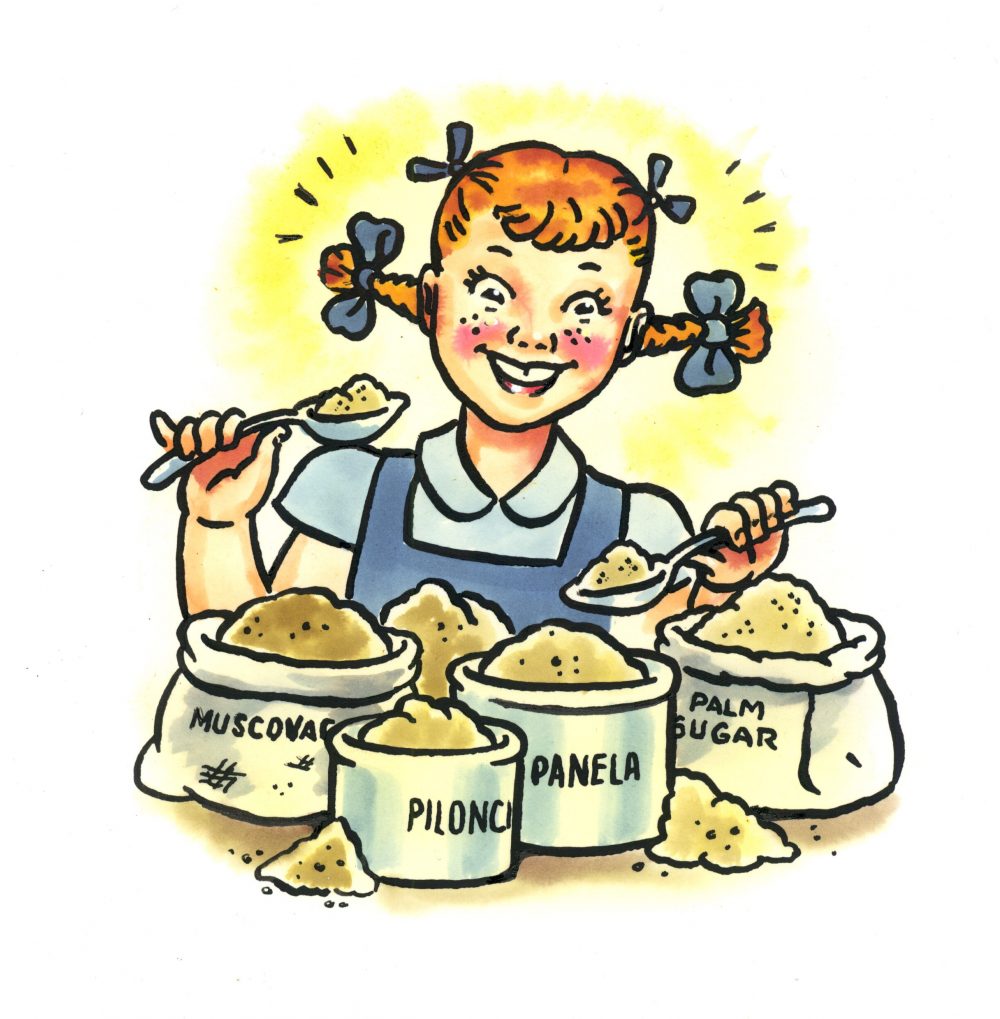
Brown Sugars That Aren’t Brown Sugar
Confused by the sheer variety of sugars available these days, Whitney Morris, of Vancouver, Washington, wanted to know more, including the differences between raw sugars and conventional brown sugar, and whether they can be used interchangeably.
They may be similar in color and serve the same purpose—to sweeten—but brown sugar and raw sugars are quite different, and substituting them for each other isn’t a simple one-for-one. Conventional brown sugar is refined white sugar that is blended with molasses. Raw sugars are made from a number of sources and are unfiltered and unrefined. Because they are less processed than brown sugar, raw sugars tend to have earthier, more complex flavors. Some of our favorites include muscovado, a rich, almost bittersweet sugar made from sugarcane in Mauritius and the Philippines; cone-shaped piloncillo (also known as panela), which is made from boiled-down sugarcane juice in Latin America; and Asia’s jaggery, which is made from a blend of cane juice and date or palm sap and has a maple syrup-like flavor. Though we love the tastes of these sugars, they contain varying amounts of moisture. In addition, some raw sugars are produced as solid blocks that require shaving or chopping before use. These differences make them challenging substitutes for brown sugar. We had the most success in rich, moist desserts such as blondies (we particularly liked muscovado). But we had trouble using raw sugars in recipes that rely on creaming for lift and structure, as the moisture and granulation interfered with how the mixtures trapped air.
Garlic Prep You Can Taste
There are numerous ways to prep garlic, from chopping cloves to simmering whole heads. Yosi Gordon, of Mendota Heights, Minnesota, wondered how these various methods affect flavor.
With garlic prep, two factors most influence flavor. First, the more a clove is bruised (whether by crushing, chopping, mincing or grating), the more pungent it is. This is because bruising ruptures cell walls, creating a chemical reaction that produces the telltale allium flavor. Second, heat tames harshness, mellowing garlic’s flavor. Cooks around the world have developed numerous ways of using these factors to influence how garlic flavors their food. The most gentle garlic flavor is achieved by leaving the cloves whole, briefly cooking them in liquids, then discarding them before adding the remaining ingredients, as they do when making puttanesca in Naples. The strongest flavor is had by grating or mashing whole cloves, as when making curry pastes with a mortar and pestle in Thailand. Poaching whole cloves offers a middle ground. Some Italian cooks make garlic confit by gently simmering whole cloves in oil until tender, sweet and jammy. And at Milk Street, we like to slice the top third off whole heads of garlic, then simmer them in soups and stews until tender. We then squeeze the softened cloves into the broth, where they dissolve and add both body and mild garlic flavor.
Onion Timing Is Everything
Plenty of cooks like to prep ingredients in advance. Eric Moeller, of Louisville, Kentucky, wondered just how far ahead he can chop onions before using them.
Prepping produce ahead is a cooking convenience, but it also has shortcomings. Most prep involves cutting or slicing in some way, which can expose produce to oxygen or trigger other chemical reactions that change flavor, texture and appearance (consider how quickly avocados and apples turn brown). In the case of onions—similar to garlic—cutting increases their pungency. That’s because it allows enzymes called alliinases to react with sulfur-containing chemical compounds. The longer cut onions sit, the longer the reaction and the more pronounced their pungency. We’d heard you can counteract this by rinsing cut onions just before cooking them. To find out if this worked, we diced and refrigerated onions overnight. We then rinsed them just before cooking. As a control, we also tried dicing and cooking an onion immediately with no rinsing. No surprise, we found that freshly diced onions that were cooked immediately had the sweetest, mellowest flavor. Rinsing the onions we had prepped ahead did tame their bite a bit, but they still had a pronounced pungency. For this reason, we recommend against prepping onions in advance when they are a main ingredient in a dish. When they are more of a background note, as in soups and stews, prepping them ahead is fine, but we suggest rinsing them just before cooking.




